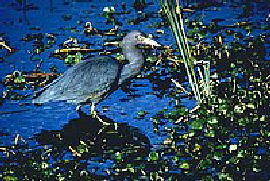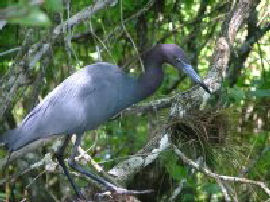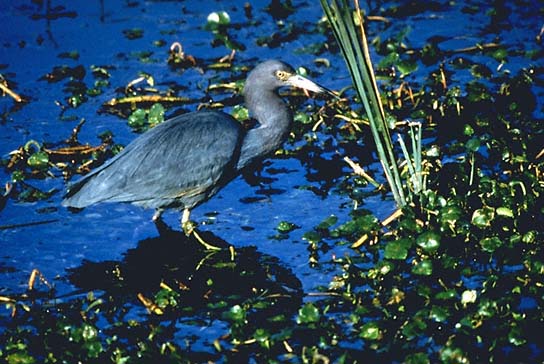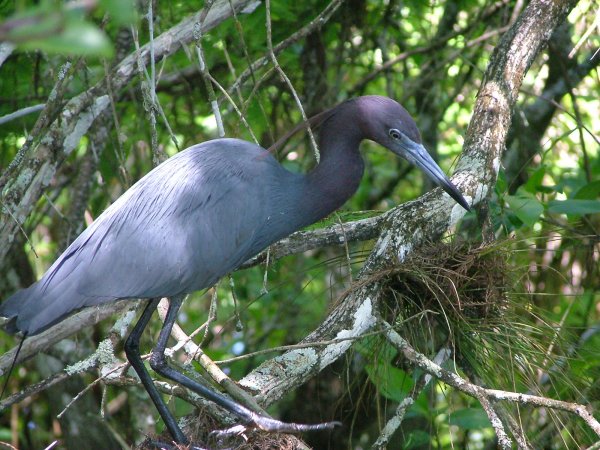Long-legged Waders
Description
25-30" (64-76 cm). W. 3'5" (1 m). Adult slate blue with maroon neck. Bill grayish with black tip; legs greenish. Immature is white, usually with dusky tips on primaries. Young birds acquiring adult plumage usually have a piebald appearance. Snowy Egret somewhat smaller, all white, with black bill and legs, yellow lores and feet.
Habitat
Freshwater swamps and lagoons in the South; coastal thickets on islands in the North.
Nesting
3-5 pale blue-green eggs placed in a nest of sticks in a small tree or bush. Nests in colonies.
Discussion
This is one of the most numerous herons in the Southeast and may be observed in large mixed concentrations of herons and egrets. It eats more insects than the larger herons and is sometimes seen following a plow to pick up exposed insect larvae. Adults usually forage alone, stalking the marshes for prey, but immatures tend to feed in groups, their white plumage serving as a signal, drawing distant birds together at good foraging places. Unlike the egrets, it has no fancy plumes and was thus spared by plume hunters.




